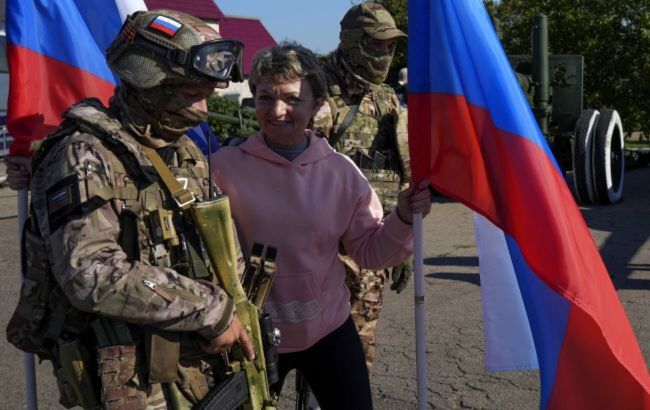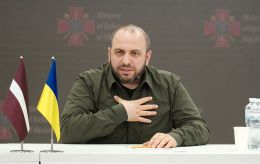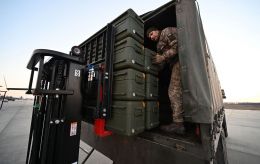Propaganda in Donbas: how occupation authorities deceive local population using 'foreign' media
 Illustrative photo: local leader deceives population using "foreign" media (Getty Images)
Illustrative photo: local leader deceives population using "foreign" media (Getty Images)
The head of the occupation administration in the Donetsk region held a meeting with a group of so-called "foreign journalists" and politicians, attempting to create the illusion of international interest in the occupied territories, according to the Center for Countering Disinformation.
The head of the occupation administration in Donbas held a meeting with "foreign journalists" and politicians from the US, Latin America, the Czech Republic, Slovakia, Türkiye, Belgium, and France.
Russian propaganda uses such events to showcase supposed international attention to the temporarily occupied territories and to create the impression that the so-called "truth about Donbas" is finding an audience abroad.
The centerpiece of the speech included claims about a "genocide in Donbas," a "Ukrainian water blockade," and "reconstruction" of the occupied territories. However, these narratives lack documentary evidence and are part of an information campaign aimed at justifying Russia’s actions.
In reality, no reputable international outlet sends its correspondents to the occupied territories, as this would violate Ukrainian law. The "foreign journalists" and politicians who participated in the meeting were mostly fringe figures and do not represent the positions of recognized global media.
According to the Center for Countering Disinformation, such meetings serve only as tools to disguise failures of local "administration" in Donbas, while attempts are made to shift responsibility for the humanitarian catastrophe in the region onto Ukraine.
The situation illustrates how Russian propaganda actively employs disinformation to create the illusion of legitimacy for its occupation and to justify the consequences of its presence in the temporarily seized territories.
By the end of August, at least 30,000 places for internally displaced persons from Donbas had been arranged across 15 Ukrainian regions and the capital. By early September, these sites were expected to be ready for use.
Meanwhile, since the beginning of August, 1,350 children have been evacuated from settlements in the Donetsk region, where forced evacuations are underway, though 2,424 children remain in areas unsafe for residence.

